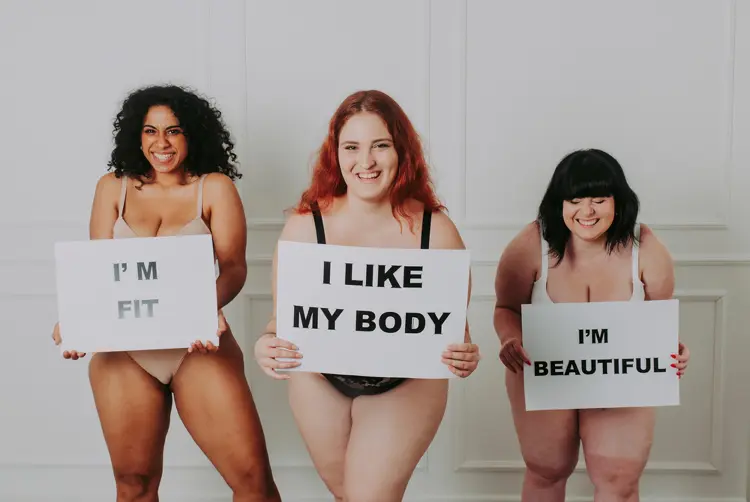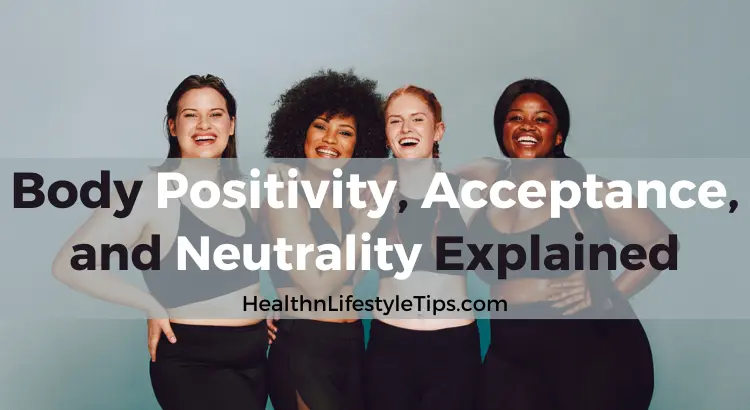You are finally ready to end your constant struggle to change your natural size and shape, and you accept that it is time to appreciate how your body is and wants to be.
Yet, as you take this journey, you will eventually need to decide: Will you be body-positive, body-accepting, or body neutral?
The movement away from strict standards of body size and shape is a powerful and popular one, but in recent years, it has fragmented into several different methods of thinking and behaving.
In truth, there is no single, perfect way to feel about your own body, so you should consider all three options as you find comfort and confidence in your own skin.
Body Positivity: You Define Beauty Yourself
Body positivity is perhaps the first movement within fat rights campaigns to gain popular acceptance and widespread esteem.
The core belief of the body positivity movement is that all people deserve to have a positive body image and to feel comfortable and confident in their bodies, regardless of what those bodies look like or how they function.
The body positivity movement embraces all bodies, though it places particular emphasis on traditionally marginalized bodies, like fat bodies, disabled bodies, queer bodies, and BIPOC bodies. Through body positivity, many activists believe that culture can come to accept and celebrate all bodies equally.
Generally, the goal of those who subscribe to the body positivity movement is to utterly obliterate their negative feelings about their bodies and replace those feelings with positive thoughts and emotions.
Eventually, one engaged with body positivity should come to fall deeply and madly in love with their body. This can be exceedingly difficult to do, especially given the time and energy our culture spends on body image and the amount of change a body undergoes over the course of a lifetime.
As a result, many activists have abandoned body positivity in favor of more realistic approaches to thinking and feeling about their bodies, such as:
Body Acceptance: You’re Enough
Evolving from the body positivity movement, body acceptance recognizes that it is natural and common to experience negative feelings regarding one’s body.
Instead of striving to be overjoyed by one’s body, regardless of how it looks or functions, those supportive of body acceptance instead work to find ways to accept their body as it is.
The body acceptance movement is much more forgiving of insecurities and frustrations, which makes it much more approachable for those in recovery. It might also be a more helpful movement for those instructed by healthcare providers to use medications like Ozempic for weight loss and diabetes.
Still, the typical goal for body acceptance is to enjoy a greater amount of positive body image than negative body image, which continues to center the body as an important component in one’s mental health and physical well-being.
When so much of an individual’s mental energy is spent thinking about one’s body — in either a positive or a negative way — that individual can become obsessed with how they look or else exhausted by the stress of trying to change their body image. Thus, many activists are beginning to campaign for an entirely new method.

Body Neutrality: You’re Beautiful the Way You Are
As opposed to body positivity and body acceptance, both of which require individuals to think often about how they look — and to think about how they look — body neutrality encourages individuals to stop thinking about their bodies altogether.
The core belief of body neutrality is that the body is neither enemy nor a friend because bodies cannot be either good or bad. Bodies simply are.
Because it is impossible to separate an individual from their body and maintain life, body neutrality activists argue that it is much more expedient to focus not on how one feels about their body but instead on what their body needs to sustain itself.
The key to achieving body neutrality is to stop thinking about one’s body altogether. One might respond to cues such as hunger and thirst, a desire to move, and a need for rest, to ensure that the body is properly nourished to function as well as possible.
Then, one can strive to banish all thoughts about how they look, and they can work to stop making judgments about other people’s bodies, as well.
Conclusion
How you come to think about your body depends on your current mental health and body image.
There is no right way to find comfort in your size, shape, and skin; as long as you find a way to banish the damaging and dangerous negative thoughts about your body, you will develop a happier and healthier lifestyle in the future.
